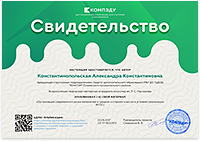1. First, the teacher presents the present perfect. Next, the students try using it in structured exercises. Finally, the students try to have a conversation together using the present perfect.
PPP
TTT
SSS
2. Students learn English by translating to and from their native language. They memorize irregular verb forms by writing them down over and over. Speaking skills are not a main focus.
the communicative approach
the audiolingual method
the grammar-translation method
3. Students listen to a dialogue between a taxi driver and passenger. They fill in gaps and then practise a dialogue with a partner. Tomorrow they will go outside and practise asking for directions.
the Silent Way
the communicative approach
immersion
4. The teacher only uses English, but the students can use English or their first language. The teacher does not correct mistakes when his students speak English. Students can start speaking English when they are ready.
the natural approach
task-based learning
the lexical syllabus
5. The students learn patterns of language by repeating model sentences that the teacher provides. They memorize set phrases and receive positive reinforcement from their teacher when they perform drills correctly.
the communicative approach
the audiolingual method
total physical response
6. ESL students at the school take part in class and school activities with native English students their own age.
task-based learning
community language learning
submersion
7. First, students learn how to say words properly. Next, they learn to read and write. They use colour charts and rods to help with the pronunciation of sounds. Teacher talking time is minimal.
community language learning
the Silent Way
the colour method
8. The teacher says commands and acts them out. The students try to perform the action. The teacher repeats by saying the command without acting it out. The students respond. The roles are then reversed.
the direct approach
total physical response
the natural approach
9. First the teacher finds a way for the students to engage with a subject emotionally. Then students focus on studying the construction of the target language. Then learners activate what they learned through engaging activities.
ESA
the natural approach
the audiolingual method
10. The teacher introduces grammatical structures and rules by showing a video. The students practise the grammar in context. The teacher gives lots of meaningful examples to demonstrate the grammar.
the inductive approach
the deductive approach
the reductive approach





